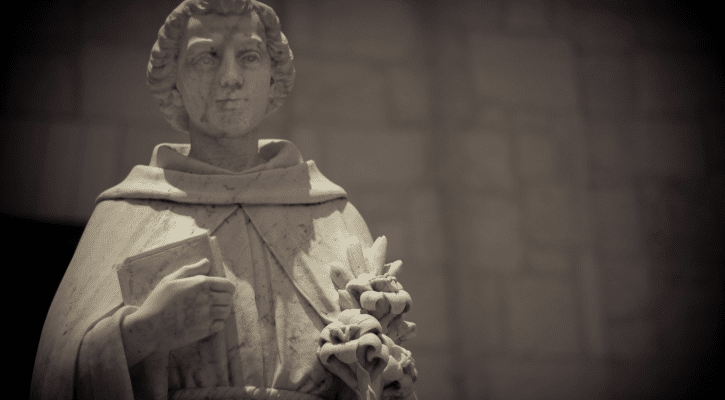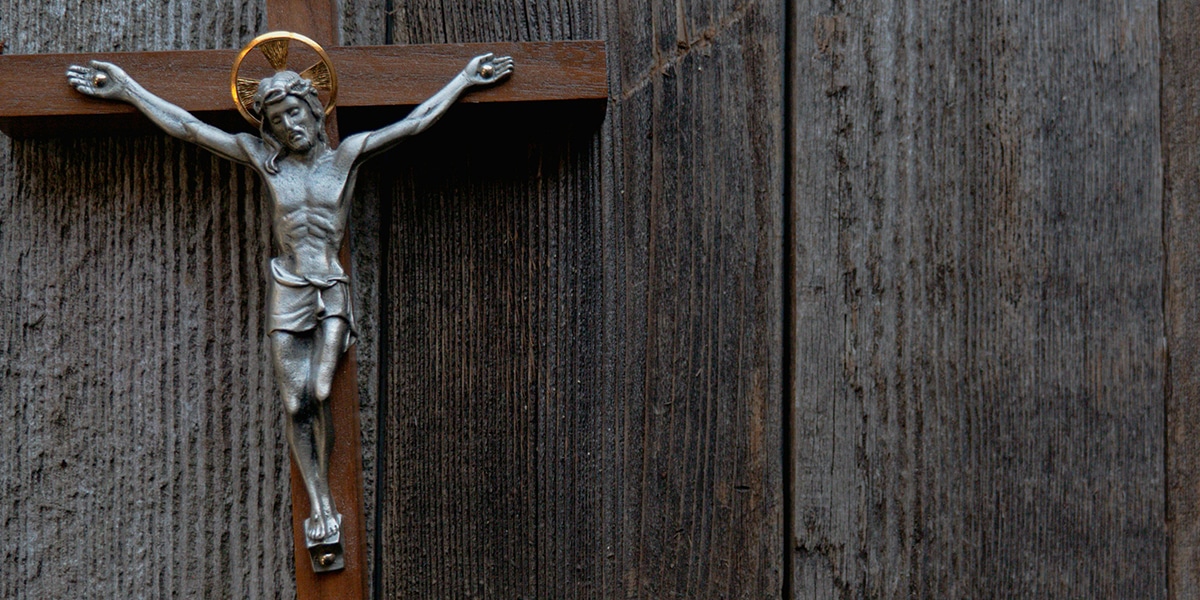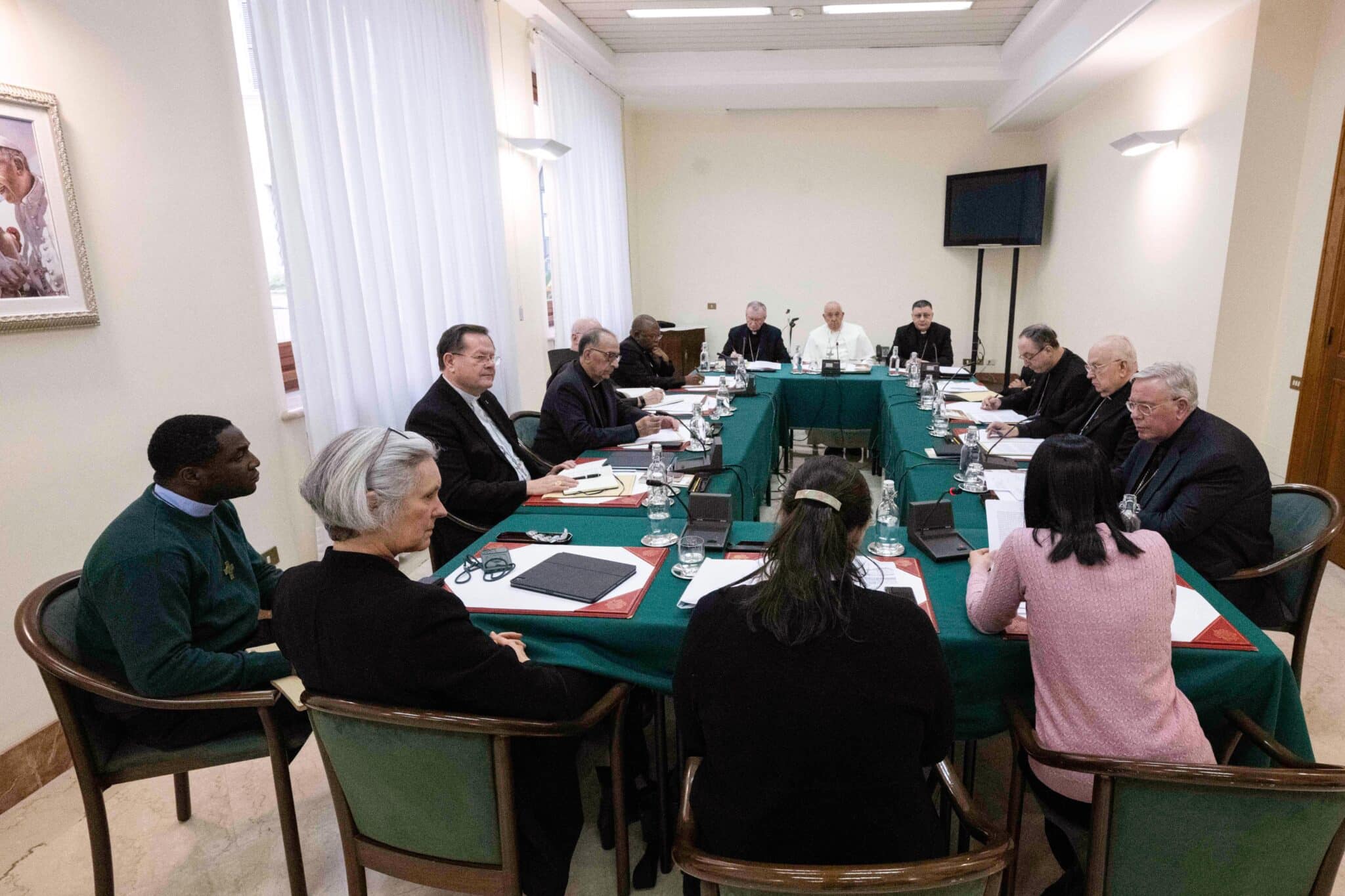St. Anthony was born in 1195 (13 years after St. Francis) in Lisbon, Portugal, at the mouth of the Tagus River, from which explorers would later sail across the Atlantic. His parents, Martin and Mary Bulhom, belonged to one of the prominent families of the city and were among those who had been loyal in service to the king.
The infant was baptized in the nearby cathedral at the foot of Castelo Sao Jorge, which still dominates the city. His parents named him Fernando. Fernando Bulhom attended the cathedral school and at the surprisingly young age of fifteen entered the religious order of St. Augustine. “Whoever enters a monastery,” he later wrote, “goes, so to speak, to his grave.” For Fernando, however, the monastery was far from peaceful, because his old friends came to visit so frequently. Their vehement political discussions hardly provided an atmosphere for prayer and study.
After two years of this, the young man asked to move and was sent to Coimbra, one hundred miles north. This was the beginning of nine years of intense study, including learning the Augustinian theology that he would later combine with the Franciscan vision. Fernando was ordained a priest probably during this time.
Anthony Joins the Franciscans
The life of this young priest took a crucial turn when the bodies of the first five Franciscan martyrs were returned from Morocco. These holy men had preached in the mosque in Seville, almost being martyred at the outset, but the sultan allowed them to pass on to Morocco, where, after continuing to preach Christ despite repeated warnings, they were tortured and beheaded. Now, in the presence of the queen and a huge crowd, their remains were carried in solemn procession to Fernando’s monastery.
Overjoyed and inspired by the martyrs’ heroic deaths, Fernando came to a momentous decision. He went to the little friary the queen had given the Franciscans in Coimbra and said, “Brother, I would gladly put on the habit of your Order if you would promise to send me as soon as possible to the land of the Saracens, that I may gain the crown of the holy martyrs.” After some challenges from the prior of the Augustinians, he was allowed to leave that priory and receive the Franciscan habit, taking the name Anthony, after the patron of their local church and friary, St. Anthony of the Olives. He was allowed to take vows immediately, as the Order did not yet require a novitiate.
True to their promise, the friars allowed Anthony to go to Morocco, to be a witness for Christ and possibly a martyr as well. But, as often happens, the gift he wanted to give was not the gift that was to be asked of him. Anthony became seriously ill, and after several months he realized he had to go home.
Detour to Italy
He never did arrive home. His ship ran into storms and high winds and was blown east across the Mediterranean. Months later, he arrived on the east coast of Sicily. The friars at nearby Messina, though they didn’t know him, welcomed him and began nursing him back to health. Still ailing, he wanted to attend the great chapter of the Pentecost Mats (so called because the three thousand friars could not be housed and slept on mats). Francis was there, also sick; however, history does not reveal any meeting between Francis and Anthony. Since Anthony was from “out of town,” he received no assignment at the meeting, so he asked to go with a provincial superior from northern Italy. “Instruct me in the Franciscan life,” he asked, not mentioning his prior theological training. Now, like Francis, he had his first choice—a life of seclusion and contemplation in a little hermitage near Monte Paolo.
Perhaps we would never have heard of Anthony if he hadn’t gone to an ordination of Dominicans and Franciscans in 1222. As they gathered for a meal afterward, the provincial suggested that one of the friars give a short sermon. Quite typically, everybody respectfully declined. So Anthony was asked to give “just something simple,” since he presumably had no education.
Anthony also demurred but finally began to speak in a simple, artless way. Suddenly, the fire within him became evident. His knowledge was unmistakable, but his holiness was what really impressed everyone there. He would go on to become one of the greatest preachers of his time.
To learn more, visit the Novena to Saint Anthony of Padua.








